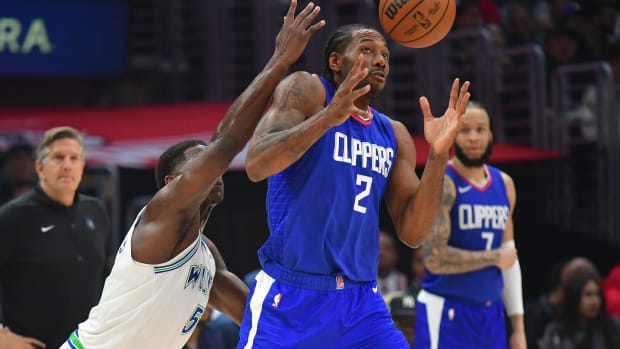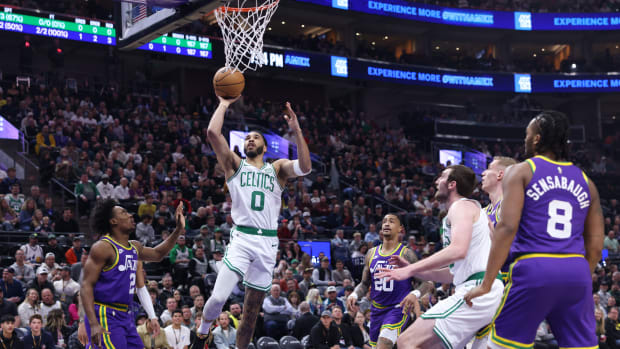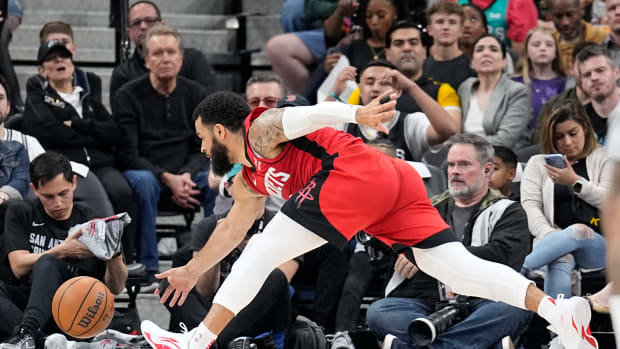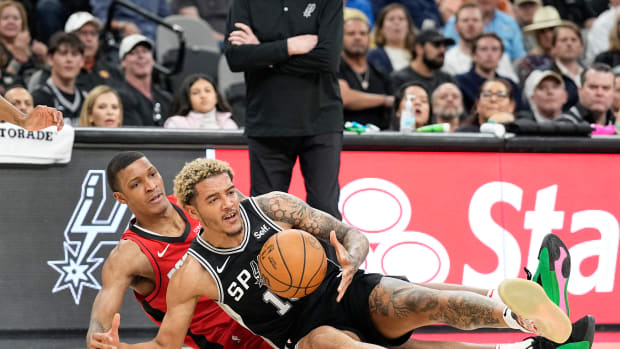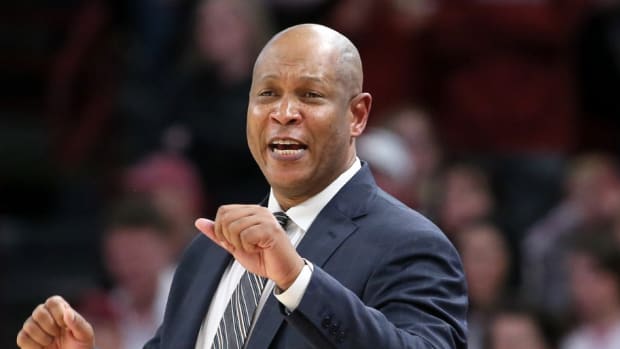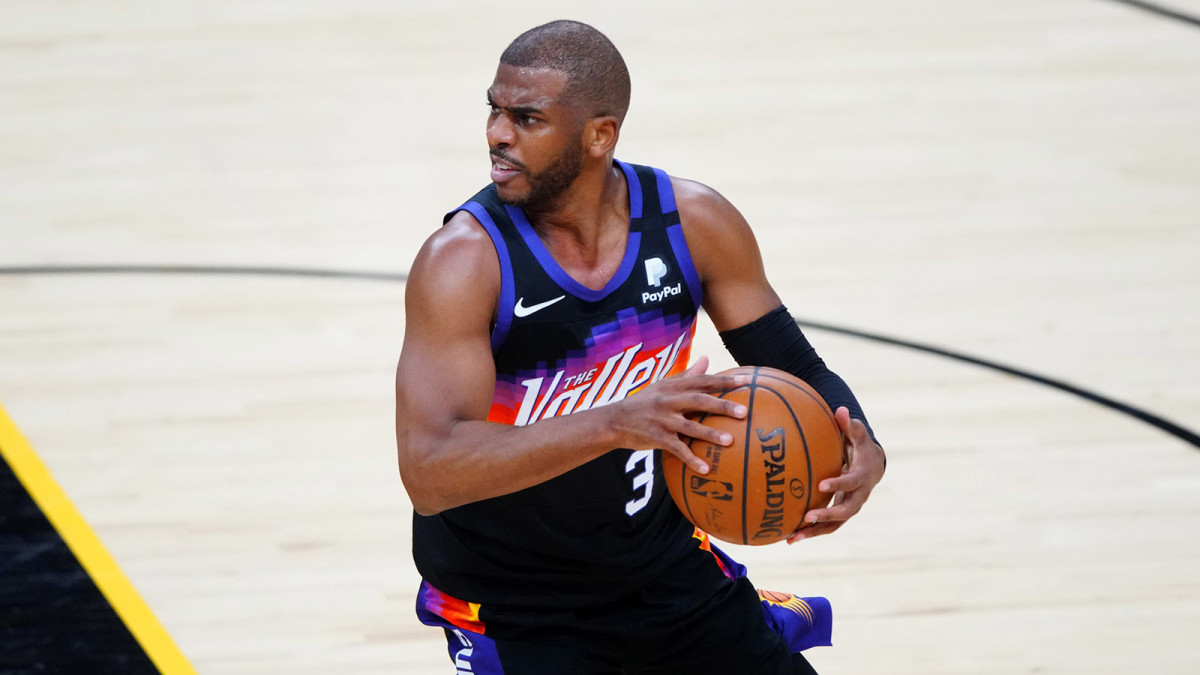
How the Suns Mastered the Pick-And-Roll
It’s no surprise even though history tells us it should be. Only 14 players have ever competed in the NBA playoffs at 35 (or older) and six feet (or shorter). It’s a list of hangers-on; before this year, Avery Johnson’s 2001 run to the Western Conference finals with the Spurs might be the brightest example.
Now, standing several heads and many shoulders above them all, we have Chris Paul, the first and only player that tall and old to ever separately average at least five assists, 10 points, or 30 minutes per game in the playoffs. Obviously, Paul is more than a bare-minimum contributor, as his 37-point, nine-assist obliteration of the Nuggets Sunday night showed. He’s elemental to how the Suns play and who they are, with tight pick-and-roll orchestration that might be the most immutable act on display by any 36-year-old in the entire world.
There are several reasons why this team has reached the Western Conference finals, but how they cooperate while running the league’s most basic halfcourt action is at or near the top of the list. With Paul, Phoenix’s pick-and-roll throughout this postseason has felt inevitable, patient, relentless and, above everything else in the scariest possible way, unbothered. (Paul finished the second round with a cutthroat assist-to-turnover ratio of 8.2.)
Under their 11-time All-Star’s watch, each possession is the product of hands, eyes and a near lifetime’s worth of maniacally competitive concentration that’s been synthesized to ensure every step and second are accounted for. According to Synergy Sports, there are 53 players in this postseason who’ve run at least 25 pick-and-rolls. Paul ranks third in the percentage of all his possessions used (a whopping 69.7%) and fourth in points per possession (1.18).
As the word random becomes more ingrained in the NBA’s lexicon—with offenses knowing the more nimble and frantic they are, the harder it becomes for defenses to slow them down—Paul is that GIF of Jon Snow drawing his sword on a stampeding army. Even though he’s more than capable of attacking in transition and ratcheting up the tempo, a carefully choreographed pick-and-roll is his most reliable blade. Right now, as he heads into his 22nd playoff series, it also feels like the apotheosis of his legendary need to govern the game.
Paul has just about never felt more like an expert curator who understands when and how to waffle from superstar to connective tissue. (In 21 completed postseason duels, Paul’s 25.5 points average against the Nuggets was a career-high. His 9.2 points per game against the Lakers in Round 1 was a career-low.)
It’s natural to wonder how Paul would approach the point guard position had he been born 15 years later, but on this timeline he commands a roster that’s built to thrive in the type of structured environment he’s able to dominate, with several interchangeable pieces that’ve flattened themselves into complementary tools.
Most attention should be paid to the signature fallaways Paul launched from the right elbow throughout Games 3 and 4. Even when his own man pursued well enough to contest the shot, Paul’s treatment of Denver’s dropping bigs was a form of mild torture.
This sequence above is operatic, from Devin Booker stopping short on his cut to set a sudden ball screen that forces the switch, to Deandre Ayton anticipating Paul’s spin toward the sideline instead of the middle and responding with a step-up screen, to the extra few degrees of arc CP puts on his fadeaway to lift the ball over Aaron Gordon’s fingertips … bravissimo.
Paul’s organizational skills are just as satisfying, though. The Suns did an exceptional job all series getting into single-side tags that forced the Nuggets to essentially choose how they wanted to die. Below, Gordon either has to help on Ayton’s roll or stay out and defend Jae Crowder in the weakside corner. If Ayton doesn’t finish over the top, Crowder is wide open, one pass away.
The Suns’ pick-and-rolls are a cornucopia of movement, finesse and bite. They cut and screen. They shift their bodies into empty spaces that were just cleared by a teammate and augment their shooting by constantly putting pressure on the rim (and vice versa). Timing is everything and they are all carried out with a purpose.
The play above begins with some misdirection. Keep an eye on Booker: When the ball gets back to Paul, he slides up from the block to where the Paul-Ayton pick-and-roll was initiated. Gordon shadows Booker, creating a pocket of space for Ayton to rumble through the paint. If Austin Rivers slides over to take that away, Paul can whip the ball to Mikal Bridges in the corner.
Every decision is calculated and exact, terrifying because the objective on most plays seemingly isn’t to impose their will, but instead to read how the defense is guarding them and then pick them apart.
With Paul leading the way, sometimes they steady the pace and bring two screeners up to the ball. Sometimes they downhill ski with a drag screen. Sometimes Paul starts in the middle of the floor and kicks to a three-point shooter who’s shaking up from the corner to the wing. Sometimes Paul starts near the scorer’s table and ends up near the opposite elbow. The Nuggets spent the entire series blitzing, dropping, switching, stunting off shooters with a third defender and none of it mattered. The Suns had an answer for it all.
For Paul, the initial line of defense might as well be translucent. His focus is behind the play. On the play below, JaMychal Green shows his cards way too soon by drifting into the middle of the paint before Dario Šarić can even release to the rim.
These are all formidable, composed actions. Now it’s worth wondering how they’ll look in the next round, potentially against a Clippers team that can deploy switch-everything units that have no obvious target (like Michael Porter Jr.) and way more athleticism than the Nuggets.
If it’s the Jazz, they’ll square off against Rudy Gobert, a three-time Defensive Player of the Year who likes to drop just like Nikola Jokić did. The big difference is Gobert can slide up closer to the point of attack and deter some of those midrange jump shots.
Neither is a particularly fun puzzle to solve, but watching Paul try will be must-see TV.
More NBA Playoffs Coverage:
• Trae Young and the Art of Drawing Fouls
• What Is the Best Possible NBA Finals Matchup?
• Kevin Durant and the Nets Falter With a Single-Star Lineup
• Suns Send Nuggets Packing After Chris Paul's Dominant Performance































